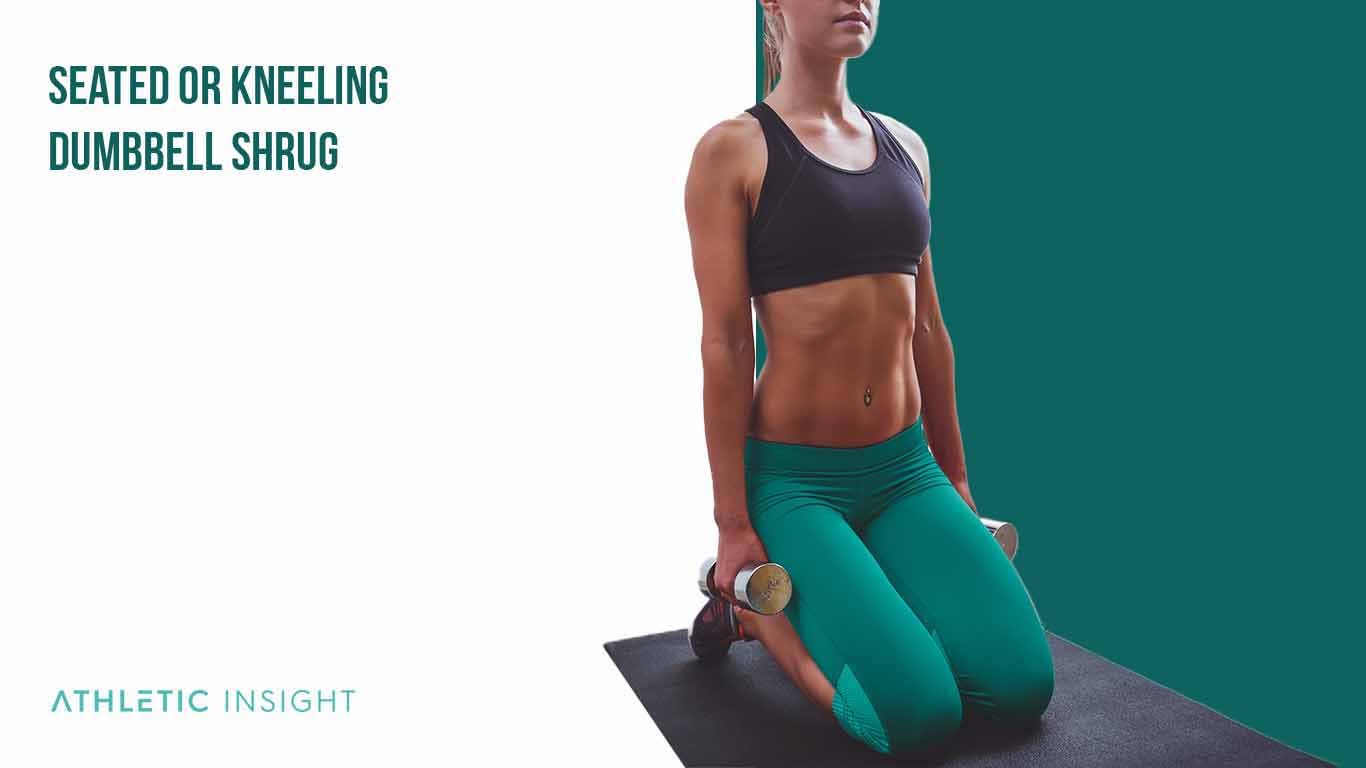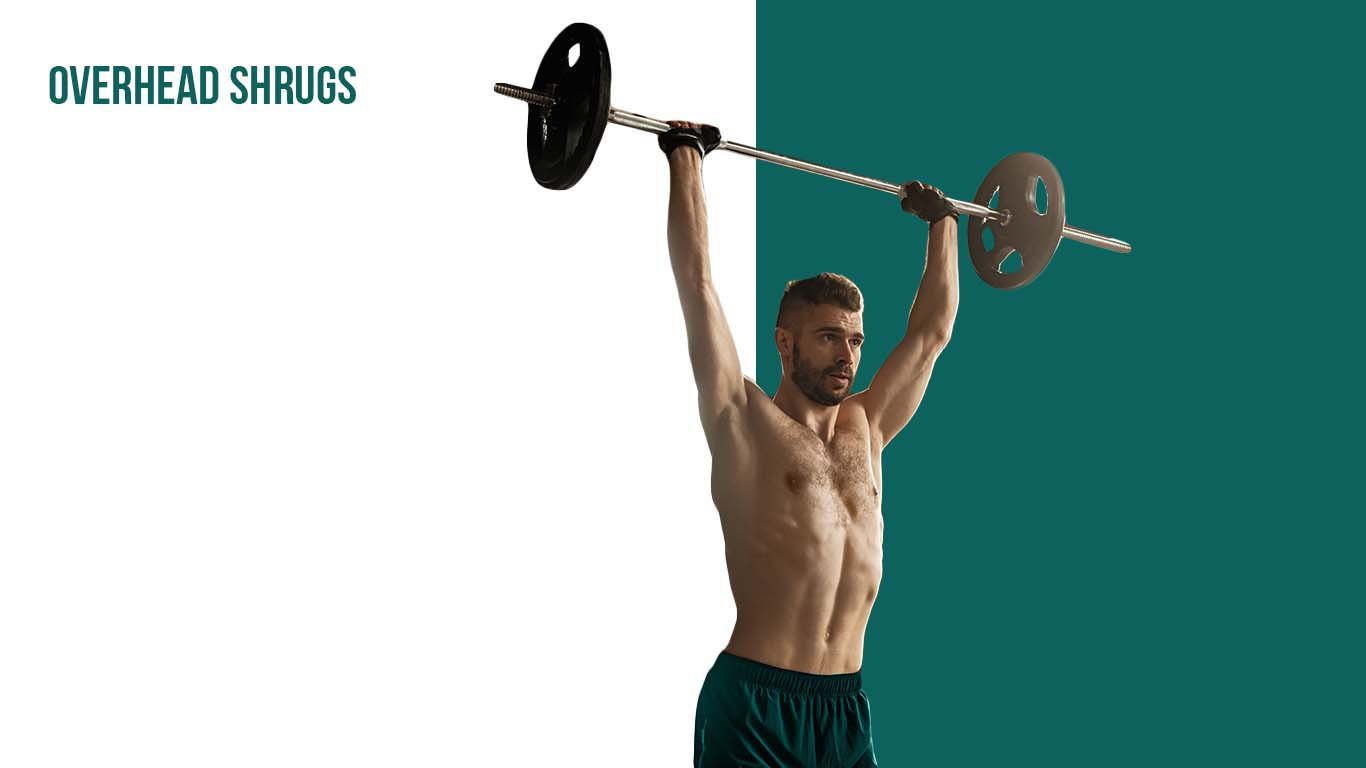The shrug is a weight-training exercise that works the trapezius muscles on either side of your neck. Shrugs help with shoulder mobility and also increase the strength of your rhomboids, neck, and erector spinae.
Shrug variations work the same muscles as the standard shrug but to different degrees, allowing for better muscle isolation. Alternatives are necessary for beginners who don’t know how to do a more complicated exercise or require a modification due to injury.
Other shrug variations are good for athletes or those with specific requirements for this exercise, such as bodybuilders or weightlifters who want to work a specific part of their neck. Athletes who play baseball, football, and lacrosse use these to build their strength up as well.
Using more taxing shrug variations, such as the laying bar shrugs, overhead shrugs, wide-grip barbell shrugs, and leaning Gittleson shrugs, can provide the strength and hypertrophy needed. Beginners can try shrug alternatives at home that they can do without risk.
Advanced users can try a kettlebell shrugs alternative, barbell shrugs alternative, or trap bar shrugs alternative. All of which should be carefully practiced as they are considered to be controversial to some and require the perfect form to avoid injury.
1. Seated or Kneeling Dumbbell Shrug
The seated or kneeling dumbbell shrug is a shrug alternative that works the trapezius, biceps, femoris, and deltoids. In this exercise, the primary muscle mover is the trapezius or the outside of your neck.

Alternatives to this exercise are the Haney barbell shrugs, farmer’s walk shrug combo, farmer’s walk with dumbbells, farmer’s walk with kettlebells, farmer’s walk with a trap bar, and laying bar shrugs.
One mistake to avoid during the seated or kneeling shrug is to bend your arms. Two tips to avoid this mistake are to lock out your elbows and only focus on the shrugging motion of your shoulders.
The toughness level of his exercise is low since the floor will support you during the entire range of motion.
2. Haney Barbell Shrugs
Haney barbell shrugs use a behind-the-back shrug to work your trapezius to a higher degree than the typical in-front barbell shrug. This exercise can be helpful for experienced weightlifters and bodybuilders.
Alternatives to barbell shrugs include the typical barbell shrug, seated dumbbell shrug, kneeling dumbbell shrug, and farmers walk shrug combo with barbell or dumbbells.
One mistake to avoid during this exercise is to put the bar too far behind your back. You can prevent this mistake by working on shoulder mobility before exercising and using a lighter weight.
The toughness level of this exercise is higher than the typical shrug.
3. Farmer’s Walk Shrug Combo
The farmer’s walk shrug combo is a shrug alternative that works the core, quadriceps, hips, erector spinae, forearms, deltoids, and trapezius, and it’s particularly useful for athletes or sporters who want to improve their general strength. Since you will be moving the entire time, it will tax your core and coordination more so than other shrug exercises.
Alternatives to this exercise include the farmer’s walk with or without a trap bar, Haney barbell shrugs, overhead kettlebell farmers walk, and the traditional barbell walk.
One mistake to avoid during this exercise is to move back and forth while walking. You can avoid this mistake by bracing their core and facing their shoulders forward. Since it takes extra core strength and coordination, its difficulty is higher than the regular shrug.
4. Laying Bar Shrugs
The laying bar shrugs are an alternative that works the trapezius and deltoids. This exercise can isolate the trapezius to a higher degree since your body is supported during the entire exercise.
The laying bar shrug alternatives include the standing bar shrug, laying cable shrug, walking dumbbell shrug, and farmers walk with kettlebells.
One mistake to avoid during this exercise is to move your body during the motion. Two tips to avoid this mistake are to keep your body on the bench or floor for the entire movement and your head on the rest.
The toughness level of this exercise is intermediate. Its main difficulty is in maintaining proper form.
5. Overhead Shrugs
Overhead shrugs are a shrug alternative that works the upper trapezius and levator scapulae. This exercise works the back more than other shrug exercises and can work with an overhead squat form for athletes and weightlifters.

Alternatives to this exercise include the overhead squat, overhead snatch, pullups, lat pulldowns, and barbell shrugs.
One mistake to avoid during this exercise is to use an underhand grip. Two tips for performing this exercise are keeping your shoulder blades back and down and not arching your back.
This is an advanced exercise since it requires more shoulder mobility.
6. Wide-Grip Barbell Shrug
The wide-grip barbell shrug is a shrug alternative that works the forearms, trapezius, and upper back. Furthermore, this barbell shrug also increases someone’s grip strength due to the strain placed on your forearms.
Alternatives to this exercise include the narrow-grip barbell shrug, underhand barbell shrug, barbell overhead press, and dumbbell seated shrug.
One mistake to avoid during this exercise is to round your upper back. Users can avoid this exercise by keeping their arms straight and heads facing forward.
Since it requires more grip strength and wrist mobility than the standard shrug, the wide-grip barbell shrug is tougher.
7. Single-Arm Low Cable Angled Shrug
The single-arm low-cable angled shrug is a one-side shrug alternative that works the trapezius, deltoids, and obliques. This exercise can help balance any imbalances in muscles on someone’s body, which can be helpful for upper-body athletes.
Alternatives of this exercise are the two-arm cable shrug, cable upright row, wide-grip barbell shrug, and lying cable shrugs.
One mistake in this exercise includes leaning with your upper body. Two tips to avoid this mistake are keeping your body in an upright position and keeping your arm straight.
This exercise only taxes one side but can use more core strength than the other two-side variations of the shrug.
8. Leaning Gittleson Shrug
The leaning Gitttleson shrug is a variation that works the obliques, trapezius, deltoids, and erector spinae. This exercise is helpful for weightlifters and bodybuilders who want to build their neck and upper back.
Alternatives to the learning Gittleson shrug are the wide-grip barbell shrug, narrow-grip barbell shrug, dumbbell shrug, kettlebell shrug, one-arm walking dumbbell shrug, and farmer’s walk.
One mistake to avoid during this exercise is to bend your arm at the elbow. Two ways that users can avoid this mistake are to hold onto the bench where they are sitting and to keep their chest upright.
This can be considered an easy variation since you will be sitting the entire time and not have to use your core or legs.
9. Kelso Shrug
The Kelso shrug is a shrug alternative that uses dumbbells to help target the upper back, rhomboids, trapezius, and erector spinae. This exercise can be useful for upper-body athletes and bodybuilders who need to build their bigger backs.
Alternatives to the Kelso shrug are the seated dumbbell shrug, standing barbell shrug, wide-grip barbell shrug, lying cable shrug, and leaning Gittleson shrugs.
One mistake to avoid during this exercise is moving your chest off the bench. Users can prevent this exercise by keeping their heads in line with their necks and avoiding arching their lower back.
The toughness level of this exercise is moderate since it requires more muscular tension and endurance than other shrug variations.
10. Chin-Up Shrug
The chin-up shrug is a full-body exercise and shrug alternative that works the deltoids, latissimus dorsi, rhomboids, erector spinae, triceps brachii, biceps brachii, and core. This exercise is suitable for weightlifters and athletes who want to work on their relative strength and build their back muscles.
Alternatives to the chin-up shrug include the chin-up, pull-up, weighted pull-up, lat pulldown, and underhand grip pulldown.
One mistake to avoid during this exercise is to use body momentum to get over the bar. Users can avoid this mistake by keeping their bodies rigid and pulling their upper back.
The hardness level of this exercise is high because it requires a high level of relative body strength.
What to know about Shrugs alternatives?
Shrug alternatives are helpful for beginners who do not have the equipment or the knowledge to perform more complex shrug options and feel comfortable using heavyweights. Furthermore, shrug alternatives are suitable for advanced weightlifters who want to target their upper back and neck to a higher degree.

Which Shrugs alternative is beginner-friendly?
The beginner-friendly shrug alternatives include the seated or kneeling dumbbell shrug and laying bar shrugs.
Which Shrugs alternative is better for Shoulders?
The best shrug alternatives for shoulders include the farmer’s walk shrug combo, wide-grip barbell shrug, overhead shrugs, and leaning Gittleson shrug.
Which Shrugs substitute is better for strength?
The best shrugs substitutes for strength include the chin-up shrug and the overhead shrug.
When should an athlete use Shrugs alternative for exercise?
An athlete may want to use a shrug alternative if they do not have enough shoulder mobility for some exercises or if they would rather build full-body strength instead of upper-body focused strength.
What are the advantages of modifying Shrugs?
The best advantage of modifying shrugs is to accommodate any exercise to work for your specific needs, limitations, injuries, or goals.
What is the Best Shrug Variation for Shoulder Extension?
The best shrug variations for shoulder extension include the overhead shrugs, chin-up shrug, and the wide grip barbell shrug. Shoulder extension is necessary for many movements in our daily lives and involves any shoulder movement between 45 and 60 degrees. The main muscles involved in the shoulder include the anterior deltoid, pectoralis major, and coracobrachialis.
Shoulder extension is essential for many movements in an athlete’s sport, such as throwing a baseball, using a lacrosse stick, blocking in football, and running or sprinting. Athletes will need to master both shoulder flexion and extension to ensure full shoulder mobility for exercises such as the overhead squat, throwing, bicep curls, overhead tricep extension, shoulder press, and pull-ups.
Can Shrugs alternatives replace the Shrugs?
No, shrug alternatives cannot fully replace shrugs, but they can provide a similar movement. Shrugs are essential for building the neck muscles and the upper back. Some shrug alternatives can target the same muscles, specifically the latissimus dorsi and trapezius, to provide similar benefits to users who are performing shrug alternatives.
Beginners can use shrug alternatives to target the neck and shoulder muscles to the same degree of difficulty, but by using less equipment, lower weight, and less-complicated form. Advanced users can use shrug alternatives to boost their upper-body strength and power.
Are Shrug Alternatives Good for Shoulder Health?
Shrug alternatives are helpful for shoulder health if they can reduce some shoulder strain and neck strain for users who commonly have neck problems or recurring injuries. Instead of forcing yourself to do the shrugs if you cannot do so, using a shrug alternative can provide similar benefits.
What are the Shrugs Variations?
Here is the list of variations of Shrugs.
- Seated or Kneeling Dumbbell Shrug
- Haney Barbell Shrugs
- Farmer’s Walk Shrug Combo
- Laying Bar Shrugs
- Overhead Shrugs
- Wide-Grip Barbell Shrug
- Single-Arm Low Cable Angled Shrug
- Leaning Gittleson Shrug
- Kelso Shrug
- Chin-Up Shrug



